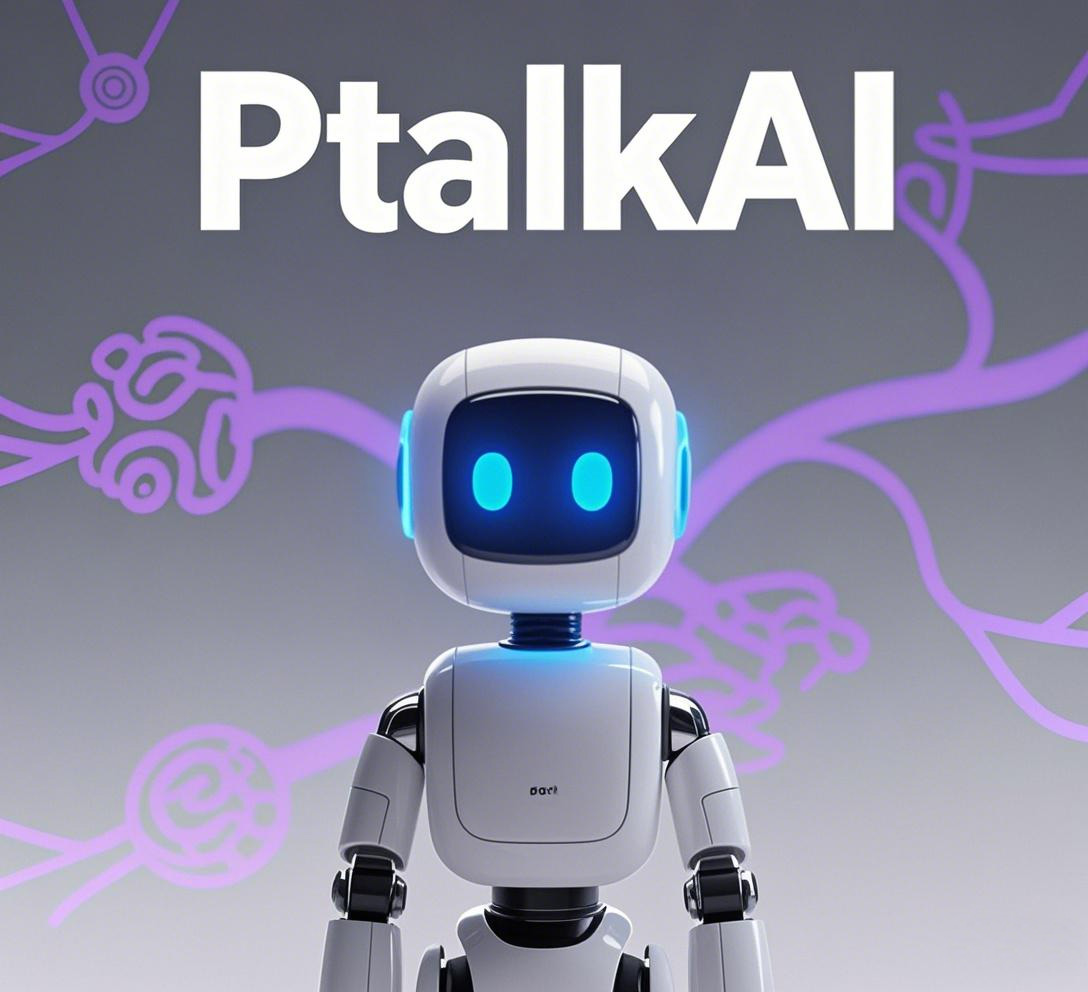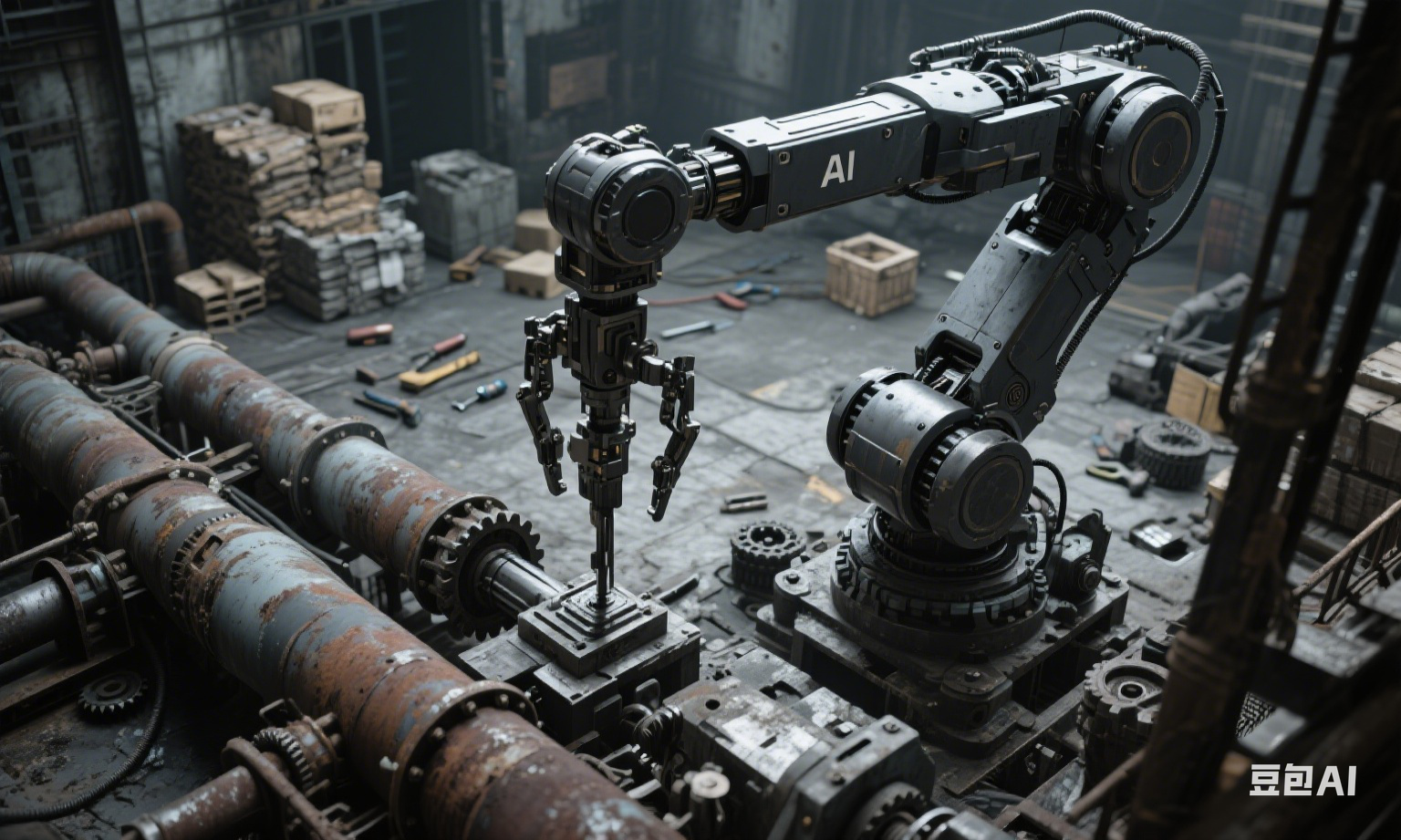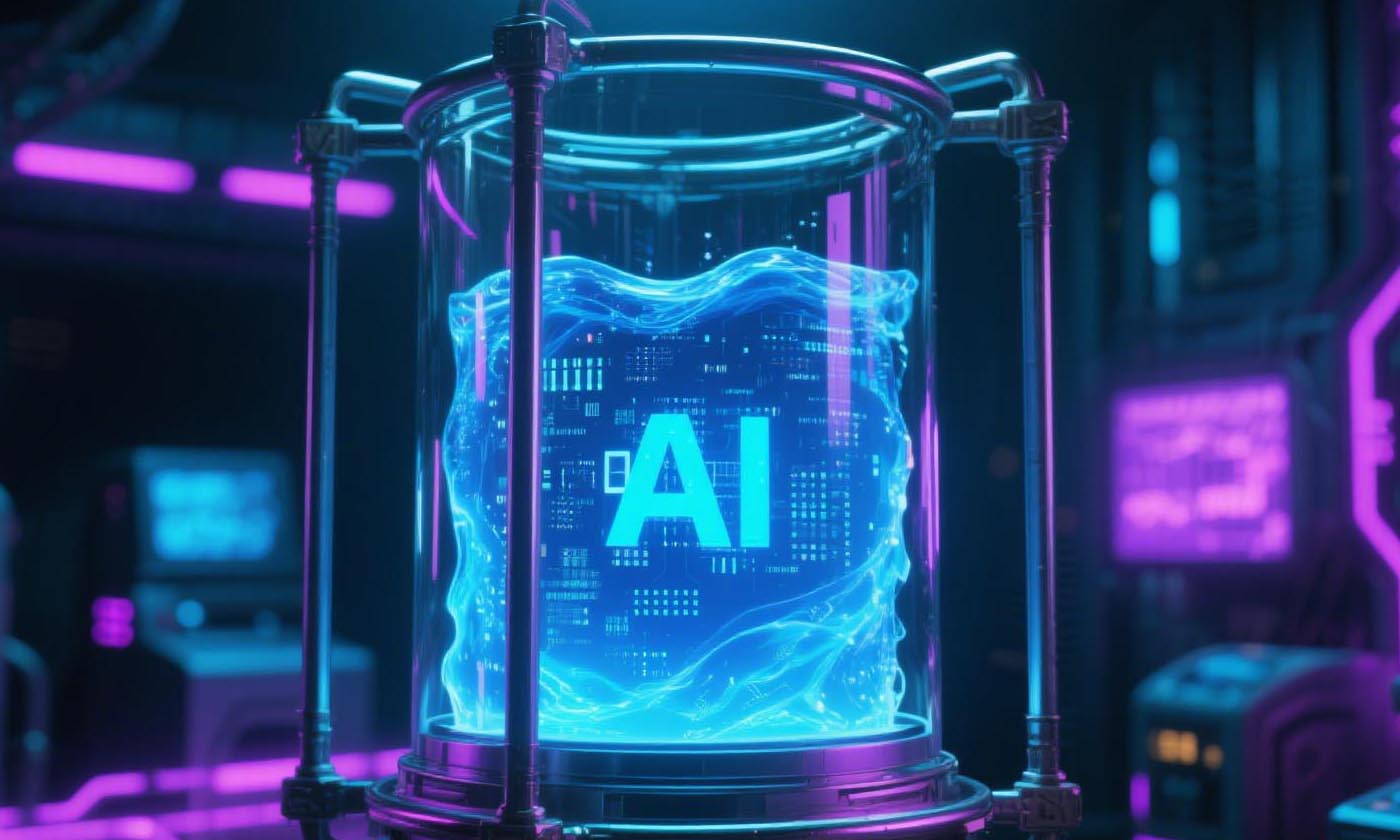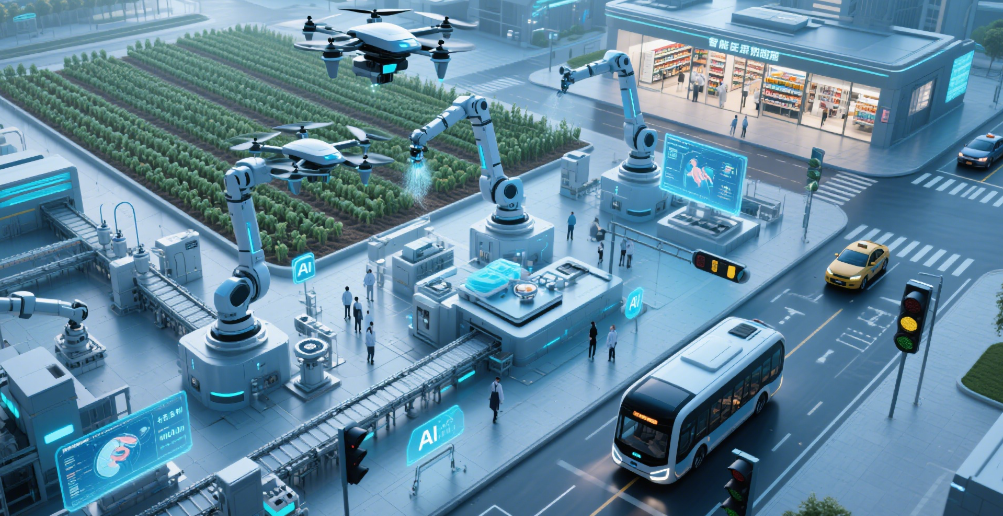AI in Livestock Farming: Transforming Animal Husbandry for a Sustainable Future
观棋 2025-06-16
The integration of artificial intelligence (AI) into livestock farming is revolutionizing traditional animal husbandry practices. As the global demand for meat, dairy, and other animal products continues to rise, coupled with increasing concerns about environmental sustainability, animal welfare, and economic efficiency, AI offers innovative solutions to address these challenges. From monitoring animal health and optimizing breeding to enhancing feeding management and reducing environmental impact, AI technologies are reshaping the future of the livestock industry. This article delves into the key applications of AI in livestock farming, its impact on various aspects of the industry, and the challenges and opportunities it presents.
AI in Livestock Farming: Transforming Animal Husbandry for a Sustainable Future
The integration of artificial intelligence (AI) into livestock farming is revolutionizing traditional animal husbandry practices. As the global demand for meat, dairy, and other animal products continues to rise, coupled with increasing concerns about environmental sustainability, animal welfare, and economic efficiency, AI offers innovative solutions to address these challenges. From monitoring animal health and optimizing breeding to enhancing feeding management and reducing environmental impact, AI technologies are reshaping the future of the livestock industry. This article delves into the key applications of AI in livestock farming, its impact on various aspects of the industry, and the challenges and opportunities it presents.
1. Precision Animal Health Monitoring
AI plays a crucial role in proactive animal health management by enabling early detection of diseases and health issues. Wearable sensors and smart collars equipped with AI technology can continuously monitor vital signs such as body temperature, heart rate, respiration rate, and activity levels of individual animals. For example, companies like Cowlar have developed smart collars that use AI algorithms to analyze data collected from cows. These collars can detect signs of heat stress, illness, or reproductive problems with high accuracy, allowing farmers to intervene promptly and reduce the spread of diseases within the herd.
Computer vision systems are another powerful AI application in livestock health monitoring. By analyzing images or video footage of animals, these systems can identify visual cues associated with health issues, such as changes in body posture, coat condition, or abnormal behavior. For instance, in poultry farms, AI - powered cameras can detect signs of lameness, feather pecking, or respiratory distress in chickens, enabling timely treatment and improving overall flock health. In addition, AI - based diagnostic tools can analyze laboratory test results, such as blood samples or milk analysis, to provide accurate and rapid disease diagnoses, helping farmers make informed decisions about treatment strategies.
2. Intelligent Breeding and Genetics
AI is transforming livestock breeding programs by optimizing genetic selection and improving breeding efficiency. Machine learning algorithms can analyze vast amounts of genetic data, including pedigree information, genomic profiles, and performance records, to identify animals with the most desirable traits, such as high milk production, fast growth rates, or disease resistance. This allows farmers to make more informed breeding decisions and accelerate the genetic improvement of their herds or flocks.
For example, genomic selection using AI has become increasingly popular in dairy cattle breeding. By analyzing the DNA of young animals, breeders can predict their genetic merit for various traits at an early age, enabling them to select the best animals for breeding without waiting for their performance data. This not only reduces the generation interval but also increases the accuracy of genetic evaluations, leading to faster genetic progress. In addition, AI - driven breeding management systems can optimize mating strategies by considering factors such as inbreeding coefficients, genetic compatibility, and market demands, ensuring the long - term sustainability and profitability of the breeding program.
3. Smart Feeding Management
AI - enabled smart feeding systems are revolutionizing livestock nutrition by providing personalized and precise feeding solutions. These systems can analyze factors such as animal age, weight, breed, production stage, and health status to determine the optimal feed composition and quantity for each individual animal. By feeding animals according to their specific nutritional requirements, farmers can reduce feed waste, improve feed conversion efficiency, and enhance animal performance.
For instance, in dairy farms, automated feeding robots equipped with AI technology can adjust the amount and type of feed delivered to each cow based on its milk production, body condition score, and other factors. This ensures that cows receive the right amount of nutrients at the right time, leading to increased milk yield and quality. In pig farming, AI - based feeding systems can monitor the growth rate and feed intake of individual pigs, and adjust the feed ration accordingly to optimize growth and minimize feed costs. Moreover, AI can also analyze data on feed availability, price fluctuations, and nutritional value, helping farmers make cost - effective decisions about feed procurement and formulation.
4. Environmental Sustainability and Resource Management
AI can contribute significantly to environmental sustainability in livestock farming by optimizing resource use and reducing environmental impacts. For example, AI - based manure management systems can analyze data on manure quantity, nutrient content, and weather conditions to develop optimal manure application plans. By applying manure at the right time, rate, and location, farmers can minimize nutrient runoff, reduce greenhouse gas emissions, and protect water and soil quality.
In addition, AI can help optimize water usage in livestock farms. Smart water monitoring systems can detect leaks, measure water consumption patterns, and adjust water supply based on animal needs, reducing water waste and ensuring efficient water use. AI - driven ventilation and climate control systems can also optimize the environmental conditions in livestock housing, such as temperature, humidity, and air quality, by adjusting ventilation rates and other parameters in real - time. This not only improves animal welfare but also reduces energy consumption and greenhouse gas emissions associated with heating and cooling.
5. Labor Efficiency and Automation
The livestock industry often faces challenges related to labor shortages and high labor costs. AI - powered automation technologies can help address these issues by performing repetitive and time - consuming tasks, such as feeding, milking, and cleaning, with greater efficiency and accuracy. For example, robotic milking systems can milk cows automatically, 24/7, without the need for human intervention. These systems can also monitor milk quality, measure milk yield, and detect udder health problems, providing valuable data for herd management.
In addition, AI - driven autonomous vehicles and drones can be used for tasks such as pasture monitoring, feed delivery, and animal herding. Drones equipped with multispectral cameras can collect data on pasture growth, quality, and nutrient status, allowing farmers to make informed decisions about grazing management and feed supplementation. Autonomous vehicles can transport feed, water, and other supplies to different locations on the farm, reducing the need for manual labor and improving operational efficiency.
6. Challenges and Future Outlook
Despite the numerous benefits of AI in livestock farming, several challenges need to be addressed for its widespread adoption. One of the main challenges is the high cost of implementing AI technologies, including the purchase of sensors, software, and hardware, as well as the cost of data storage and analysis. In addition, there is a lack of skilled labor with the necessary expertise to operate and maintain AI systems in livestock farms.
Data privacy and security are also major concerns, as AI systems rely on large amounts of sensitive data, including animal health records, genetic information, and production data. Ensuring the privacy and security of this data is essential to protect the interests of farmers, consumers, and the industry as a whole. Moreover, there are ethical considerations related to the use of AI in livestock farming, such as the potential impact on animal welfare and the long - term genetic diversity of livestock populations.
Looking ahead, the future of AI in livestock farming is promising. As technology continues to advance, we can expect to see more sophisticated AI applications, such as the use of artificial intelligence in combination with blockchain technology to improve traceability and transparency in the livestock supply chain. Additionally, the integration of AI with other emerging technologies, such as the Internet of Things (IoT) and big data analytics, will further enhance the capabilities of AI in livestock farming, leading to more sustainable, efficient, and profitable animal husbandry practices.
In conclusion, AI has the potential to transform the livestock farming industry by improving animal health, enhancing breeding efficiency, optimizing feeding management, promoting environmental sustainability, and increasing labor productivity. While there are challenges to overcome, the benefits of AI in livestock farming are significant, and its widespread adoption is likely to play a crucial role in meeting the growing global demand for animal products in a sustainable and responsible manner.
The integration of artificial intelligence (AI) into livestock farming is revolutionizing traditional animal husbandry practices. As the global demand for meat, dairy, and other animal products continues to rise, coupled with increasing concerns about environmental sustainability, animal welfare, and economic efficiency, AI offers innovative solutions to address these challenges. From monitoring animal health and optimizing breeding to enhancing feeding management and reducing environmental impact, AI technologies are reshaping the future of the livestock industry. This article delves into the key applications of AI in livestock farming, its impact on various aspects of the industry, and the challenges and opportunities it presents.
1. Precision Animal Health Monitoring
AI plays a crucial role in proactive animal health management by enabling early detection of diseases and health issues. Wearable sensors and smart collars equipped with AI technology can continuously monitor vital signs such as body temperature, heart rate, respiration rate, and activity levels of individual animals. For example, companies like Cowlar have developed smart collars that use AI algorithms to analyze data collected from cows. These collars can detect signs of heat stress, illness, or reproductive problems with high accuracy, allowing farmers to intervene promptly and reduce the spread of diseases within the herd.
Computer vision systems are another powerful AI application in livestock health monitoring. By analyzing images or video footage of animals, these systems can identify visual cues associated with health issues, such as changes in body posture, coat condition, or abnormal behavior. For instance, in poultry farms, AI - powered cameras can detect signs of lameness, feather pecking, or respiratory distress in chickens, enabling timely treatment and improving overall flock health. In addition, AI - based diagnostic tools can analyze laboratory test results, such as blood samples or milk analysis, to provide accurate and rapid disease diagnoses, helping farmers make informed decisions about treatment strategies.
2. Intelligent Breeding and Genetics
AI is transforming livestock breeding programs by optimizing genetic selection and improving breeding efficiency. Machine learning algorithms can analyze vast amounts of genetic data, including pedigree information, genomic profiles, and performance records, to identify animals with the most desirable traits, such as high milk production, fast growth rates, or disease resistance. This allows farmers to make more informed breeding decisions and accelerate the genetic improvement of their herds or flocks.
For example, genomic selection using AI has become increasingly popular in dairy cattle breeding. By analyzing the DNA of young animals, breeders can predict their genetic merit for various traits at an early age, enabling them to select the best animals for breeding without waiting for their performance data. This not only reduces the generation interval but also increases the accuracy of genetic evaluations, leading to faster genetic progress. In addition, AI - driven breeding management systems can optimize mating strategies by considering factors such as inbreeding coefficients, genetic compatibility, and market demands, ensuring the long - term sustainability and profitability of the breeding program.
3. Smart Feeding Management
AI - enabled smart feeding systems are revolutionizing livestock nutrition by providing personalized and precise feeding solutions. These systems can analyze factors such as animal age, weight, breed, production stage, and health status to determine the optimal feed composition and quantity for each individual animal. By feeding animals according to their specific nutritional requirements, farmers can reduce feed waste, improve feed conversion efficiency, and enhance animal performance.
For instance, in dairy farms, automated feeding robots equipped with AI technology can adjust the amount and type of feed delivered to each cow based on its milk production, body condition score, and other factors. This ensures that cows receive the right amount of nutrients at the right time, leading to increased milk yield and quality. In pig farming, AI - based feeding systems can monitor the growth rate and feed intake of individual pigs, and adjust the feed ration accordingly to optimize growth and minimize feed costs. Moreover, AI can also analyze data on feed availability, price fluctuations, and nutritional value, helping farmers make cost - effective decisions about feed procurement and formulation.
4. Environmental Sustainability and Resource Management
AI can contribute significantly to environmental sustainability in livestock farming by optimizing resource use and reducing environmental impacts. For example, AI - based manure management systems can analyze data on manure quantity, nutrient content, and weather conditions to develop optimal manure application plans. By applying manure at the right time, rate, and location, farmers can minimize nutrient runoff, reduce greenhouse gas emissions, and protect water and soil quality.
In addition, AI can help optimize water usage in livestock farms. Smart water monitoring systems can detect leaks, measure water consumption patterns, and adjust water supply based on animal needs, reducing water waste and ensuring efficient water use. AI - driven ventilation and climate control systems can also optimize the environmental conditions in livestock housing, such as temperature, humidity, and air quality, by adjusting ventilation rates and other parameters in real - time. This not only improves animal welfare but also reduces energy consumption and greenhouse gas emissions associated with heating and cooling.
5. Labor Efficiency and Automation
The livestock industry often faces challenges related to labor shortages and high labor costs. AI - powered automation technologies can help address these issues by performing repetitive and time - consuming tasks, such as feeding, milking, and cleaning, with greater efficiency and accuracy. For example, robotic milking systems can milk cows automatically, 24/7, without the need for human intervention. These systems can also monitor milk quality, measure milk yield, and detect udder health problems, providing valuable data for herd management.
In addition, AI - driven autonomous vehicles and drones can be used for tasks such as pasture monitoring, feed delivery, and animal herding. Drones equipped with multispectral cameras can collect data on pasture growth, quality, and nutrient status, allowing farmers to make informed decisions about grazing management and feed supplementation. Autonomous vehicles can transport feed, water, and other supplies to different locations on the farm, reducing the need for manual labor and improving operational efficiency.
6. Challenges and Future Outlook
Despite the numerous benefits of AI in livestock farming, several challenges need to be addressed for its widespread adoption. One of the main challenges is the high cost of implementing AI technologies, including the purchase of sensors, software, and hardware, as well as the cost of data storage and analysis. In addition, there is a lack of skilled labor with the necessary expertise to operate and maintain AI systems in livestock farms.
Data privacy and security are also major concerns, as AI systems rely on large amounts of sensitive data, including animal health records, genetic information, and production data. Ensuring the privacy and security of this data is essential to protect the interests of farmers, consumers, and the industry as a whole. Moreover, there are ethical considerations related to the use of AI in livestock farming, such as the potential impact on animal welfare and the long - term genetic diversity of livestock populations.
Looking ahead, the future of AI in livestock farming is promising. As technology continues to advance, we can expect to see more sophisticated AI applications, such as the use of artificial intelligence in combination with blockchain technology to improve traceability and transparency in the livestock supply chain. Additionally, the integration of AI with other emerging technologies, such as the Internet of Things (IoT) and big data analytics, will further enhance the capabilities of AI in livestock farming, leading to more sustainable, efficient, and profitable animal husbandry practices.
In conclusion, AI has the potential to transform the livestock farming industry by improving animal health, enhancing breeding efficiency, optimizing feeding management, promoting environmental sustainability, and increasing labor productivity. While there are challenges to overcome, the benefits of AI in livestock farming are significant, and its widespread adoption is likely to play a crucial role in meeting the growing global demand for animal products in a sustainable and responsible manner.












